
My brother and I loved Grandad Fraser’s bedtime stories.
When my grandparents visited, we would beg him to tell us a story. He’d always oblige, spinning tales of David and James’s adventures in wild places in Africa, Asia and Australia. I still remember his deep voice talking about me and my brother floating down the “great gray-green Limpopo River.” Child David sat wide-eyed and soaked it in; adult David knows he was quoting Kipling.
Our connection to stories starts at a young age and continues throughout our lives. Ghost stories, ballads, novels, oral histories, TV, movies … the world is filled with stories. Since earliest human history, our sense of who we are, where we come from and what matters to us has come from the stories we create.
We exist, connect, grow and learn through stories.
So why not use that power for your brand?
In the study “The Storytelling Brain: How Neuroscience Stories Help Bridge the Gap between Research and Society,” researchers found that narrative increases recall of and interest in information. They make your message stick.
Do you want people to listen? Remember? Act? Stories can make that happen. Let’s explore how brands can use the power of storyselling to make their marketing more effective.
Storytelling vs. Storyselling
One of my favorite novels of all time is Dune. Frank Herbert’s seminal sci-fi novel has a number of morals you could take away: the dangers of charismatic leaders, the necessity of caution when dealing with ecology, the need to take care of and live with the environment around you … but its main purpose is to entertain.
Herbert’s book doesn’t end with a call to action. Regular storytelling leaves it up to you to extract meaning from the story and define your own next step (if any).
Storyselling is different.
Storyselling is marketing driven by a narrative, just like storytelling, but the primary goal isn’t to entertain. It’s to inspire action. The narrative has to lead to a conversion: a download, a signup or a sale.
There are five main components of a storyselling narrative:
One: It shares information about your brand indirectly.
You can tell people what your brand is as much as you want; if you want them to believe it, you need to show them. Storyselling allows you to do that. Take a look at this About page from Allbirds.
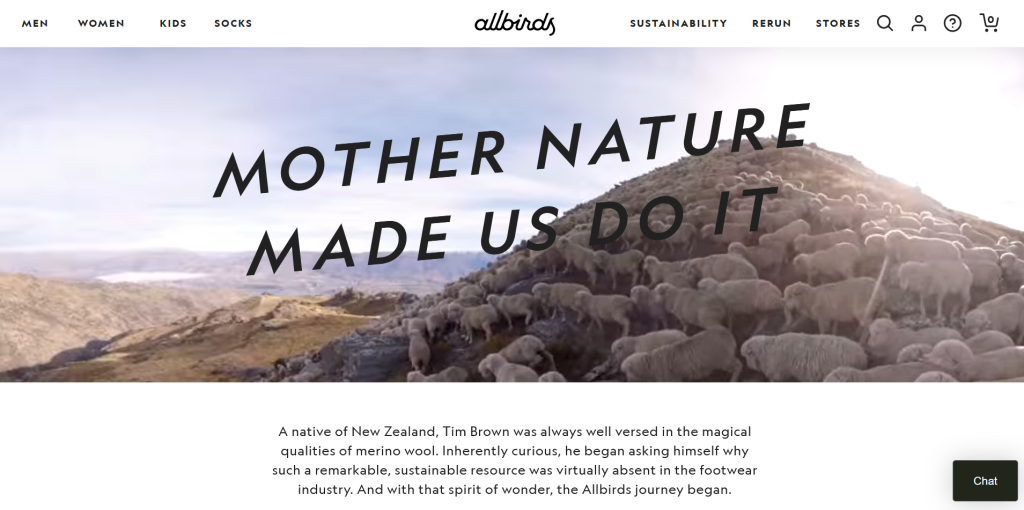
You immediately understand that Allbirds places a lot of importance on nature, probably uses merino wool as a material and tries to be sustainable. The foundation for the brand is already laid. The company doesn’t have to say any of that explicitly … it’s implied.
Two: It highlights the brand benefits through narrative.
“Show, don’t tell,” works well for benefits. Instead of stating what your product or service does, weave it into a narrative … as Google did with its “Loretta” Super Bowl commercial, where an elderly man uses Google Assistant to help him remember his wife.
Saying “you can tell Google Assistant to remember things for later” doesn’t have the same impact. The relatable story makes the benefits clear.
Three: It differentiates you from competitors.
A storyselling narrative can either outright state or imply a difference. Both are valid.
Pepsi’s advertising wars with Coke are well-known. Early Pepsi ads told stories that showcased its performance in head-to-head taste tests.
Later campaigns often implied the difference instead of outright stating it; in this ad with Jackie Chan, Diet Coke is used as the stunt double for Diet Pepsi, implying that Pepsi is the “star of the show:”
Both soft drink companies have effectively used storyselling to show differentiation over the years.
Four: It stirs emotion in the audience.
Emotion is the primary driver of decision-making — most researchers agree it’s more important than logic. Storyselling lets you use that.
The Susan G. Komen Foundation uses emotion powerfully on its mission page. Nancy Brinker, the founder of the foundation, tells the story of her sister Susan’s struggle with cancer — and once the emotional appeal has set in, offers ways to get involved in the fight against breast cancer.
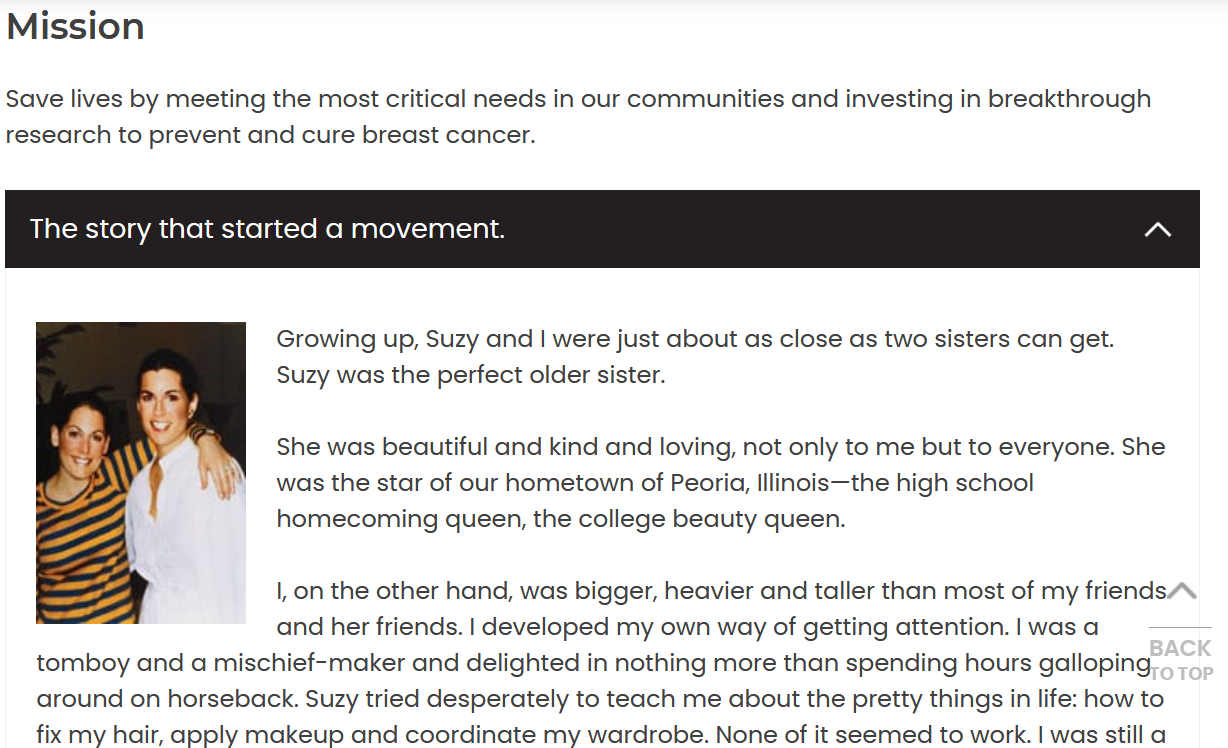
Brinker telling the story of her sister’s life and death provides an emotional motive that drives action.
Five: It motivates action.
Storyselling stories make people ask “What next?” Then you answer.
OKC-based George’s Liquors’ Instagram stories are fascinating. It’s not a big store with a giant marketing budget, but every new product it gets comes with a little skit or story. The stories stand out — and at the end of every skit or story, someone says “Stop by George’s OKC!”
There’s a clear action step for every story; these steps turn a narrative from storytelling into storyselling.
These five components are in every storyselling narrative. You’ll notice there’s a wide variety of production values, industries, content types and budgets here. Storyselling works for any kind of business and any kind of content. It doesn’t matter how little money or resources you have … you can always tell stories.
Storyselling’s Narrative Structure
Each storyselling narrative, no matter its length, progresses through five stages.
- Hook: Grab audience attention at the very beginning of the story. Think of the Allbirds page above, with “Mother Nature Made Us Do It.” Or famous novel openings like “It was the best of times, it was the worst of times,” or “The man in black fled across the desert, and the gunslinger followed.”
- Setting: Give context and background. On the Susan G. Komen page, it’s Brinker explaining that she and Susan grew up together. In the Pepsi ad, it’s Jackie Chan saying “I’m making a new film. Your client [the Diet Pepsi can] would be perfect.” Make sure the audience understands what’s happening.
- Conflict: There’s either an opportunity or a problem, sometimes both. For the Google ad, it’s obvious the man is losing his memory. For George’s Liquors, it’s the introduction of a new product. Unlike in a regular story, this has to link back to the audience member — either directly pointing out a problem or opportunity they face, or showing someone else facing it and building an empathetic connection (like the Google ad).
- Resolution: Show HOW your brand’s product or service solves the problem — for example, Google Assistant remembers for the man who can’t. Allbirds creates sustainable and useful products for people who care about the environment.
- Call to action: Where do they go from here? “Stop by George’s OKC,” says George’s Liquors. “Give For Metastatic Breast Cancer Research,” says the Susan G. Komen Foundation.
These five stages lead the audience member down a path which should end, not just in a well-told story, but action.
Storyselling Examples By Narrative Type
Let’s break down a few common types of narrative: testimonial/example/case study, hypothetical, personal anecdote and history.
Testimonial, Example or Case Study
This Animalz case study is a great example of a storyselling case study.
First, the company hooks our interest with an attention-grabbing headline:

After this comes the setting. SupportLogic is doing well. However, the landscape of content marketing is changing around it.

Then it sets up the primary conflict. SupportLogic is facing issues from “click-stealing” AI. What will it do?

Animalz swoops in with the resolution: helpful, product-led content which allows SupportLogic to not only survive, but thrive.
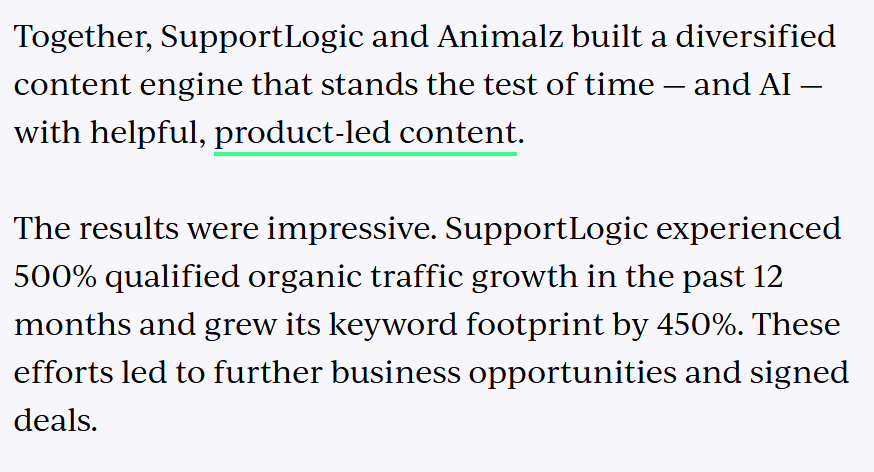
The article breaks this down in more detail for several paragraphs, then finally ends with a call to action.
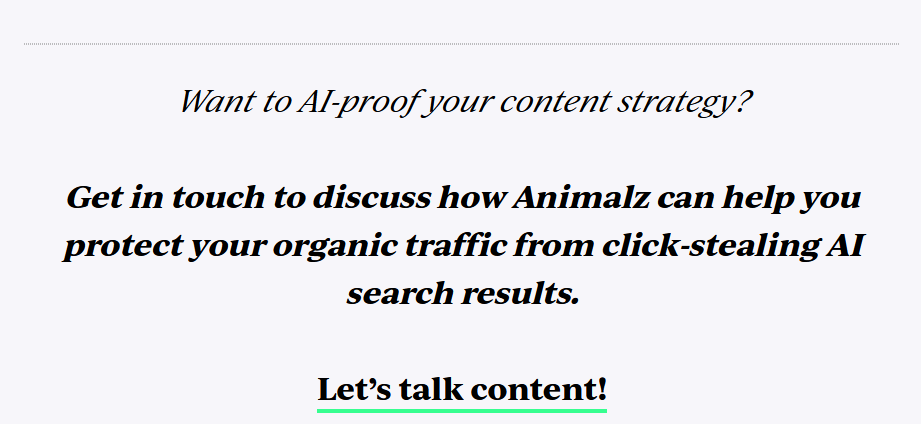
Animalz uses this example to set up the idea that it can do this for your company too. A testimonial, example or case study is a straightforward way to use social proof and storyselling together to drive client growth. This is very common in B2B. In B2C, you’ll see this more with products that need more explanation to get people interested — for example, in infomercials.
Hypothetical
Tiny Capital uses a hypothetical situation to tell a story on its homepage, starting with a clear hook and setting:
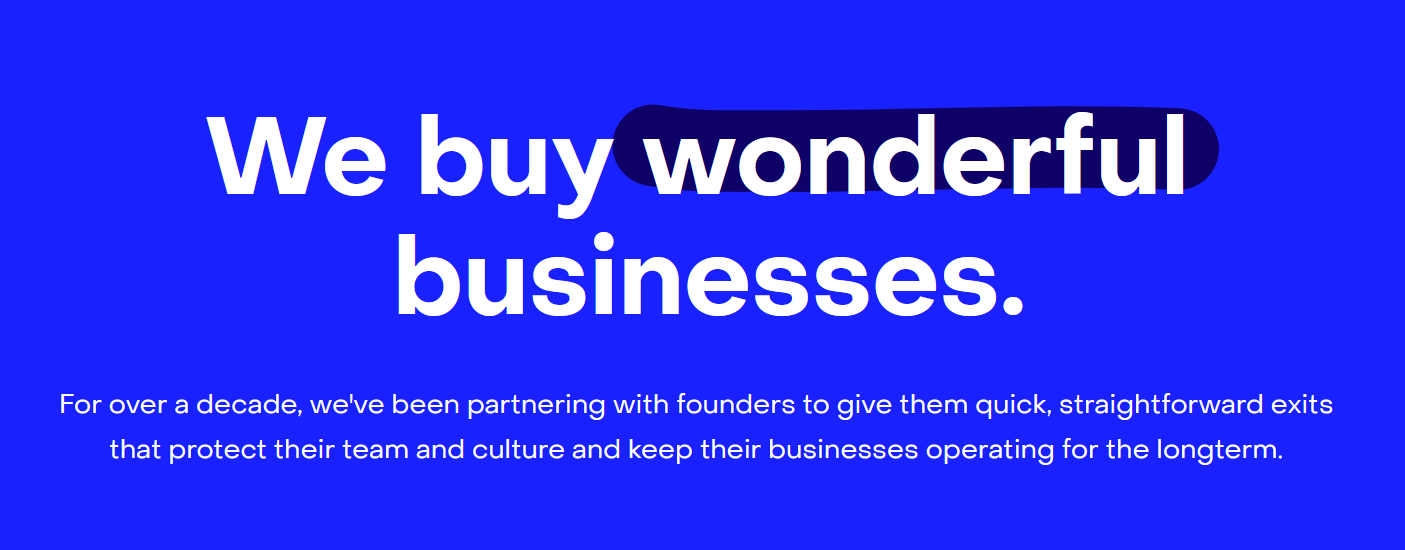
Then comes the hypothetical — the company puts you in the shoes of the business owner selling and lays out the conflict:
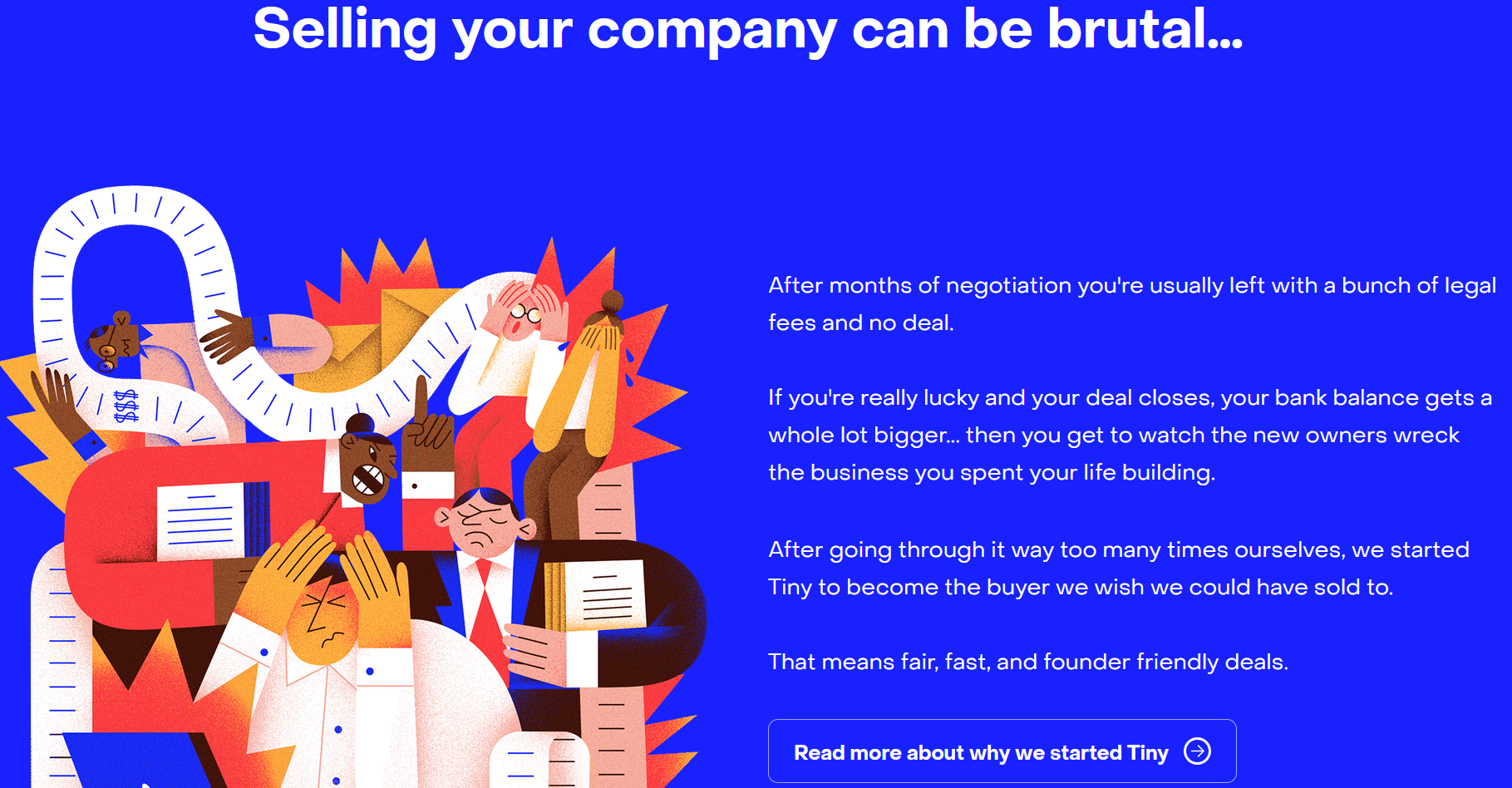
It articulates the resolution in one sentence — “fair, fast and founder-friendly deals.” Then the rest of the page is devoted to explaining that in more detail.
Finally, after positioning Tiny as the solution to the problem, the page finishes with a call to action for you to sell your own business.

The hypothetical can be used when you’re trying to build rapport with your audience. But it’s often weaker than other options; specific copywriting wins over generalities. If you use a hypothetical, make sure to narrow from general to specific as quickly as possible, as Tiny does here.
Personal Anecdote
Using yourself as an example can be one of the most powerful storyselling methods.
In this email, Jon Morrow uses his own story to build a storyselling narrative, starting with a great hook in the subject line:

Morrow rapidly lays out the setting, getting us interested in what he has to say.
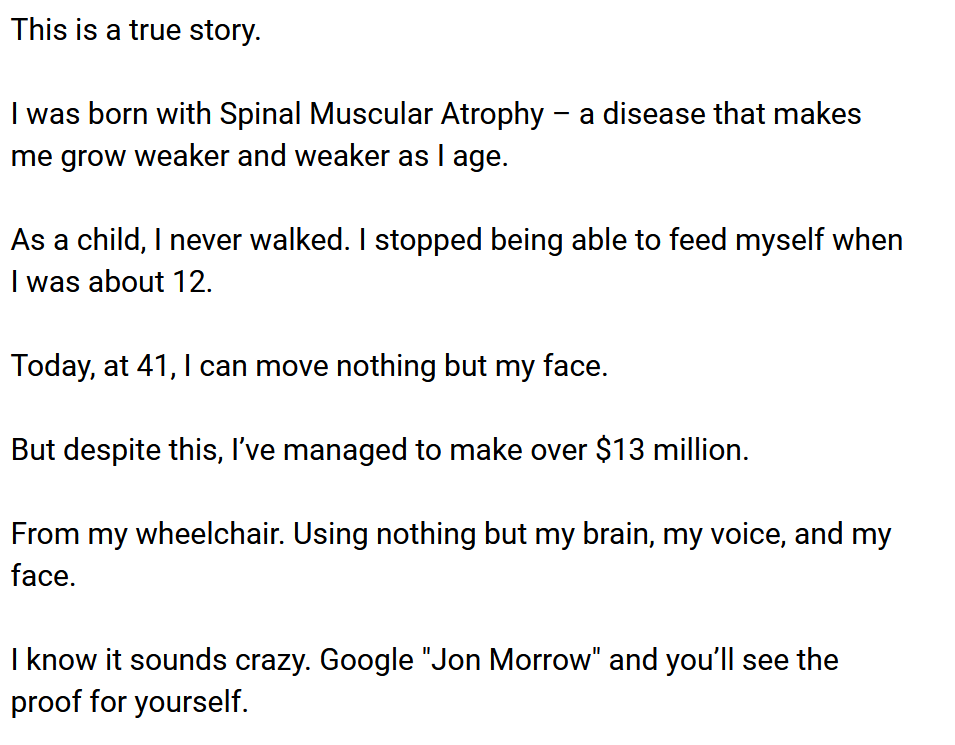
He gets through the conflict in a single sentence:

Then offers the resolution, starting with how he did it, then opening it up to include the audience:
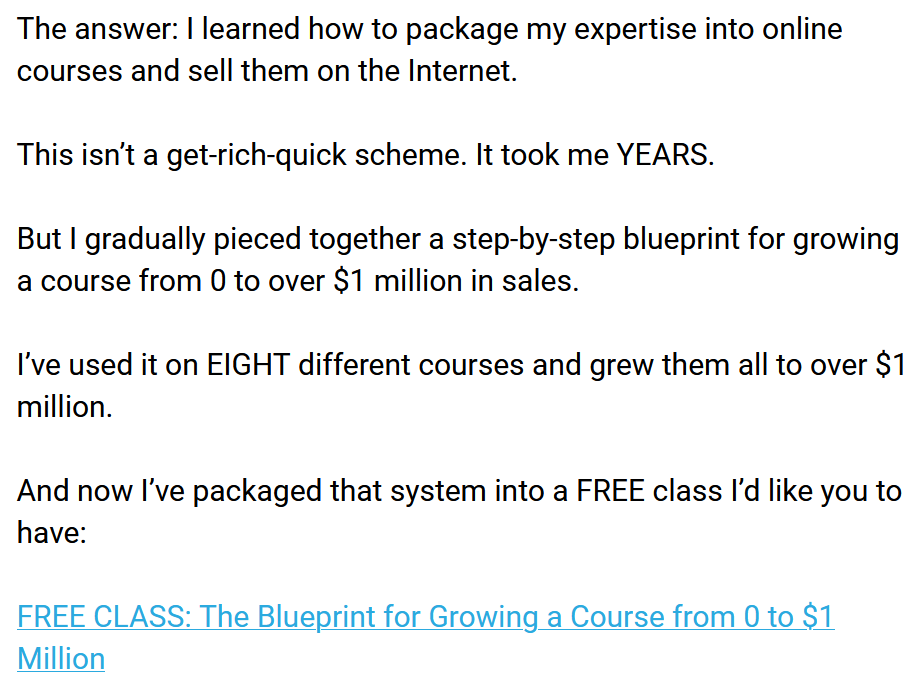
He even manages to sneak a soft call to action into his resolution before his actual call to action at the end of the email.

Morrow builds a rapport with the audience through empathy, offers himself as proof that his method works and caps it off with an audience-focused plea. Personal anecdotes are often used in B2C; however, they can work in B2B as well. Many business leaders use this strategy on social platforms like LinkedIn and TikTok.
History
Seth Godin is another very successful early content marketer. He’s been writing a blog every weekday for over 20 years; it usually includes pithy remarks about marketing, life, business, success and other subjects Godin cares about, but it also occasionally includes some selling. One such example is this post where he’s selling a calendar made by a friend of his.
Seth begins with a short, interesting sentence to hook our attention.

Then he gives the setting. In this case, it’s historical; he’s giving us a history lesson on calendars, particularly this page-a-day variant.
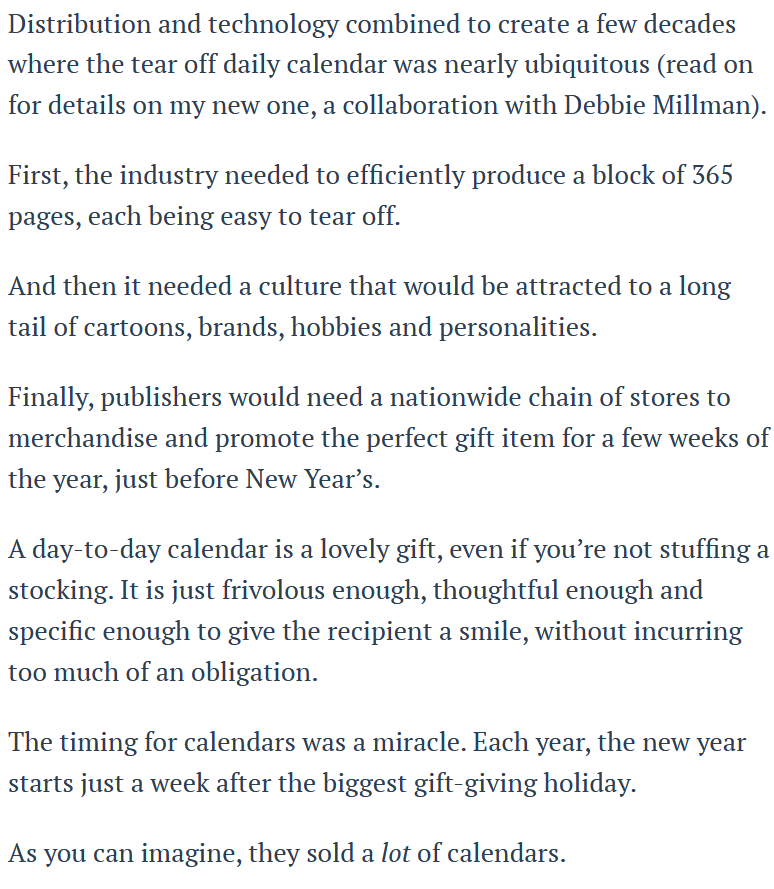
Something changed; this is history, not a look at the current day. He explains what the conflict is.
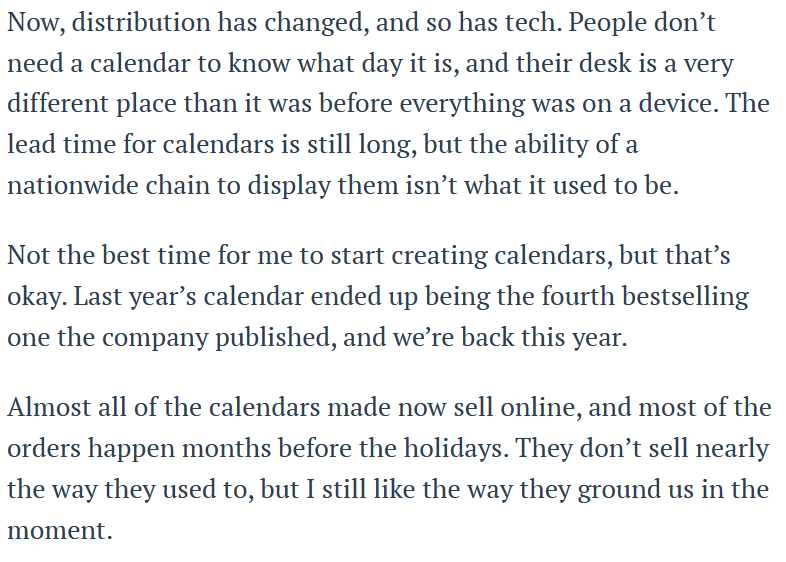
Godin explains that despite the fact that these aren’t that popular now, there’s still a reason to use them. The resolution is “we’re creating calendars for you anyway, if you’re one of the people who still likes them.”

This is an unusually soft call to action, but in Godin’s case, it works. He’s just helping out a friend, and his audience is big enough that he doesn’t need to push much to have a major impact.
Like Godin, if you’re using history for your narrative, make sure it’s very clear that the history connects to the sell. It must be relevant. An unconnected vignette doesn’t serve anyone’s purpose; don’t try to graft, say, the Wright Brothers’ first flight with your foray into artisan chocolate-making.
These four examples are the most common types of storyselling you’ll run into. These can be used in a wide variety of formats — social media posts, videos, audio, ads, blogs, landing pages, home pages … you name it. But no matter what kind of storyselling you use, include a hook, setting, conflict, resolution and call to action.
Show, Don’t Tell
Many brands tell people why they should care about their product or service. That’s an easy thing to do — but it’s not the most effective. Storyselling allows you to harness the power of stories to make a case for your brand’s effectiveness. Use it. And if you need a hand, we literally wrote the book on it. We can help. Just drop us a line, anytime.
Best Regards,
David Brandon
Copywriter
Rainmaker Digital Services